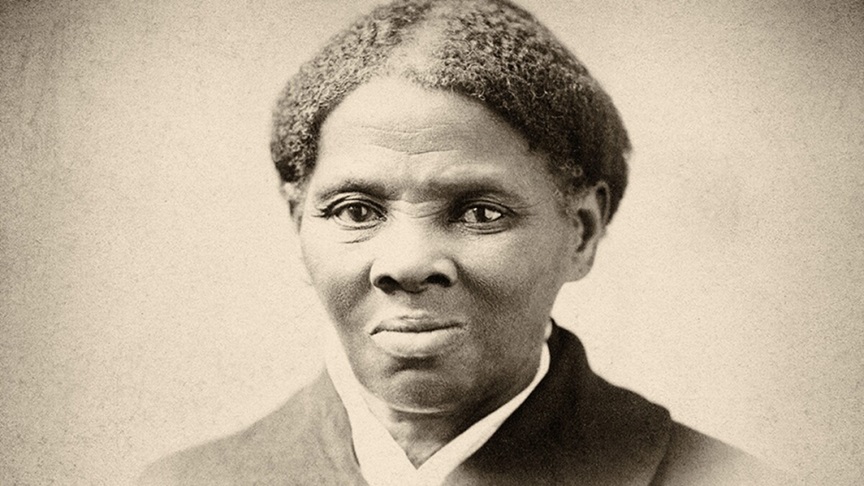
Harriet Tubman: The Moses of Her People
Harriet Tubman is one of the most inspiring figures in American history. Born into slavery, she rose above unimaginable hardships to become a beacon of hope for countless enslaved people. Known as “Moses” for her tireless efforts to lead others to freedom, Tubman’s legacy is one of courage, resilience, and unwavering commitment to justice. This article explores her remarkable life, the obstacles she overcame, and the enduring impact she has had on history.
Early Life and Struggles
Harriet Tubman was born Araminta Ross around 1822 in Dorchester County, Maryland. Her parents, Harriet Green and Ben Ross, were enslaved on separate plantations, which was a common practice that added to the fragmentation of enslaved families. As a child, Tubman endured brutal treatment, including physical abuse, neglect, and forced labor.
One of the most defining moments of her childhood occurred when she was struck in the head by a heavy metal weight, an injury inflicted by an overseer attempting to punish another enslaved person. This left her with lifelong health issues, including severe headaches and narcoleptic episodes. Despite these challenges, Tubman’s spirit remained unbroken. Her deep faith in God became a source of strength, guiding her through some of the most perilous times in her life.
Escape to Freedom
In 1849, Tubman made the daring decision to escape slavery. She fled northward, following the Underground Railroad—a secret network of safe houses and abolitionists who helped enslaved people reach freedom. Harriet’s journey was fraught with danger. She traveled mostly at night, relying on the North Star for navigation, and had to avoid slave catchers eager to capture runaways for monetary rewards.
Reaching Pennsylvania, a free state, marked a turning point in her life. For the first time, Tubman experienced the taste of freedom, but her joy was tempered by the knowledge that her family and friends remained in bondage. She resolved to dedicate her life to helping others achieve the same freedom she had found.
The Conductor of the Underground Railroad
Harriet Tubman became a conductor on the Underground Railroad, a role that required extraordinary courage and resourcefulness. Over the course of about a decade, she made 13 missions to rescue approximately 70 enslaved people, including members of her own family. Tubman never lost a single passenger on her perilous journeys.
She employed a variety of tactics to evade capture. Tubman often traveled during the winter months to minimize the chances of being spotted and used intricate codes and signals to communicate with her fellow abolitionists. Her deep understanding of the terrain and her ability to adapt to changing circumstances made her an exceptionally effective conductor.
Her work on the Underground Railroad earned her the nickname “Moses,” a reference to the biblical figure who led the Israelites out of slavery. For those she guided to freedom, Tubman was not just a leader but a symbol of hope and determination.
Civil War Contributions
When the Civil War broke out in 1861, Tubman saw an opportunity to further the cause of freedom. She joined the Union Army as a nurse, cook, and spy. Her knowledge of the South’s geography and her network of contacts proved invaluable in gathering intelligence for Union forces.
One of her most notable achievements during the war was her involvement in the Combahee River Raid in South Carolina in 1863. Working alongside Colonel James Montgomery, Tubman helped lead a mission that resulted in the liberation of more than 700 enslaved people. This remarkable feat made her the first woman in U.S. history to lead a military expedition.
Life After the War
Following the Civil War, Tubman settled in Auburn, New York, where she continued her advocacy for social justice. Despite her extraordinary contributions, she struggled financially and often had to rely on the support of friends and admirers. Tubman devoted much of her time to caring for the elderly and the poor, establishing the Harriet Tubman Home for the Aged.
She was also an active participant in the women’s suffrage movement, working alongside prominent activists like Susan B. Anthony and Elizabeth Cady Stanton. Tubman’s belief in equality extended beyond race to include gender, and she tirelessly campaigned for the right of women to vote.
Legacy and Honors
Harriet Tubman’s legacy is immeasurable. Her bravery and selflessness have inspired generations of activists and leaders. She exemplified the power of one individual to effect profound change, even in the face of overwhelming odds.
In recognition of her contributions, Tubman has been honored in countless ways. Schools, streets, and public buildings bear her name, and her story is taught in classrooms across the United States. In 2016, the U.S. Treasury Department announced plans to feature her portrait on the $20 bill, a decision that underscores her enduring significance in American history.
Lessons from Harriet Tubman’s Life
Harriet Tubman’s life offers powerful lessons about resilience, courage, and the pursuit of justice. Her unwavering commitment to freedom reminds us of the importance of standing up against injustice, no matter the personal cost. Tubman’s story also highlights the impact of faith and community in overcoming adversity.
Her work on the Underground Railroad serves as a testament to the power of collective action. While Tubman’s role was pivotal, she relied on the support and bravery of countless others who shared her vision of a better world. This collaborative effort underscores the importance of unity in the fight for social change.
Conclusion
Harriet Tubman’s extraordinary life is a shining example of the strength of the human spirit. From her humble beginnings as an enslaved child to her heroic efforts as a conductor on the Underground Railroad and beyond, Tubman’s contributions to freedom and equality have left an indelible mark on history. Her story continues to inspire and challenge us to work toward a more just and equitable world.







